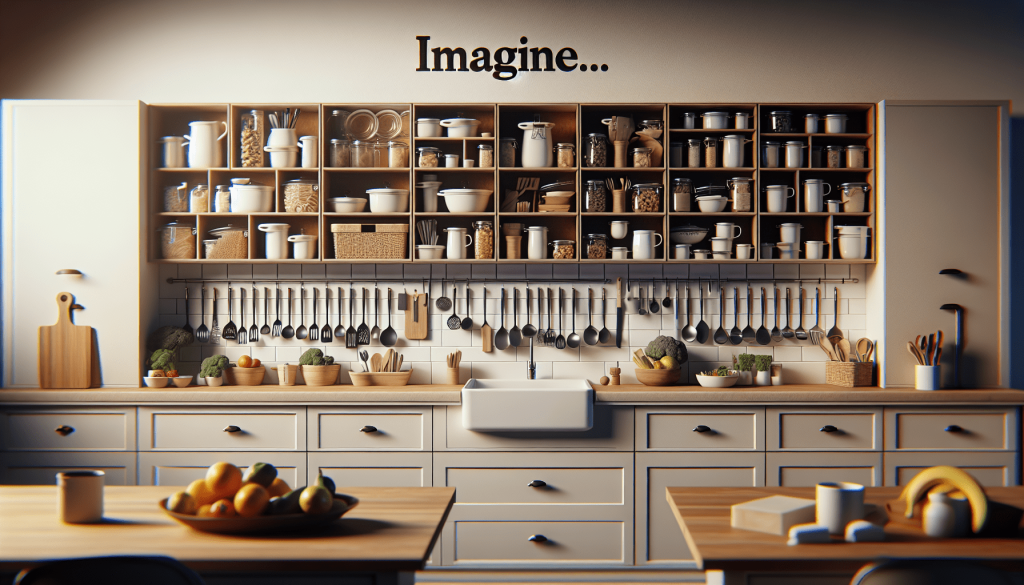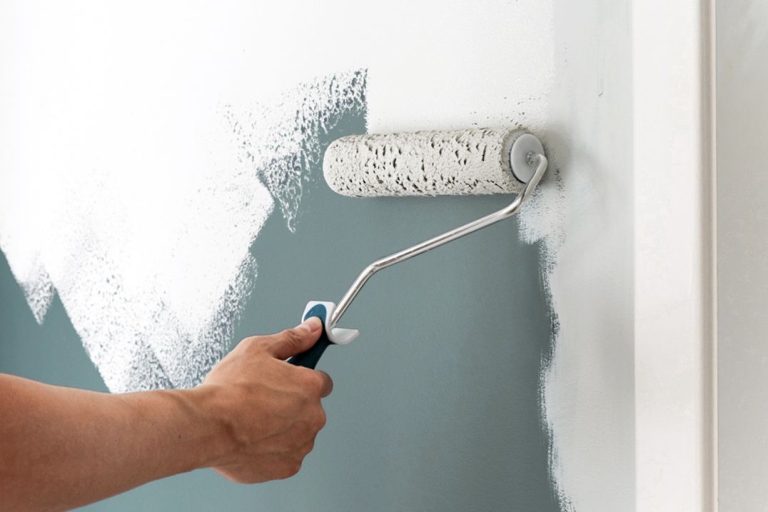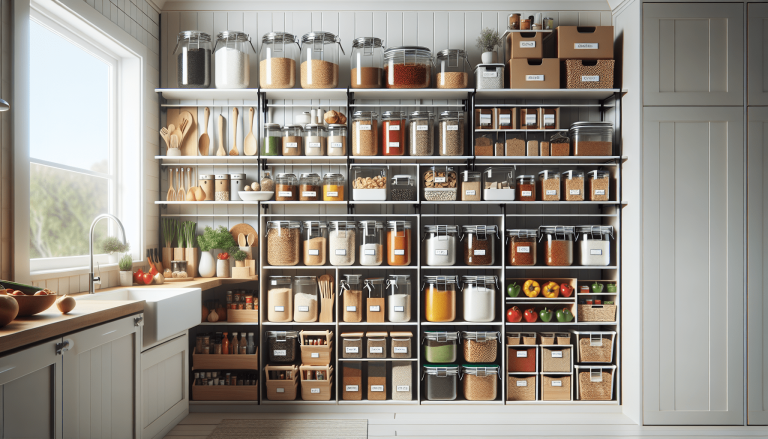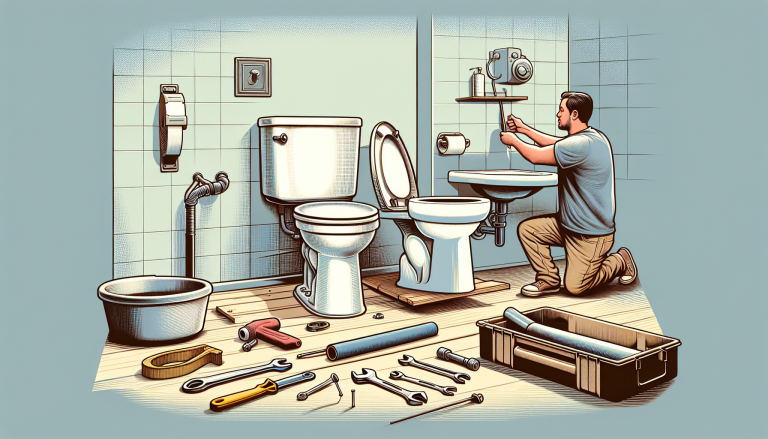Are you tired of constantly searching for utensils, spices, and pots and pans in your cluttered kitchen? If so, you’re not alone. Many people struggle to maintain an organized kitchen space. But fear not, because in this article, we will explore some easy and creative do-it-yourself (DIY) kitchen organization ideas that will help you create a clutter-free space. From utilizing vertical storage solutions to repurposing everyday items, these tips will not only enhance the functionality of your kitchen but also add a stylish touch to your culinary haven. So, let’s roll up our sleeves and get ready to transform your kitchen into an organized oasis!
Table of Contents
ToggleDrawer Dividers
When it comes to organizing your kitchen drawers, drawer dividers are an excellent solution. They allow you to create customized compartments for different items, keeping everything neat and easily accessible. There are various options for drawer dividers, including adjustable dividers or DIY alternatives.
Using adjustable dividers gives you the flexibility to change the layout of your drawers whenever you need to. This is especially useful if you frequently rearrange your kitchen utensils or if you want to adapt the dividers for different drawer sizes. They are typically made of plastic or bamboo and can be easily adjusted to fit your specific needs.
If you prefer a more hands-on approach, you can also create your own drawer dividers using materials such as cardboard, foam board, or wood. This allows you to fully customize the size and number of compartments to perfectly accommodate your utensils and other kitchen items. It’s a budget-friendly option that allows you to unleash your creativity while keeping your drawers organized.
Separate utensils by type
To maximize efficiency and streamline your cooking process, it’s essential to separate your utensils by type. This not only makes it easier to find the tool you need quickly but also prevents clutter and disarray in your kitchen drawers.
Start by categorizing your utensils into groups such as cooking utensils, serving utensils, and baking tools. Then, assign a designated compartment or drawer for each group. For example, you can keep your cooking spoons, spatulas, and tongs in one drawer, while reserving another drawer for your measuring cups, whisks, and pastry brushes.
By separating your utensils by type, you’ll always know where to find what you need, saving you time and reducing frustration while cooking or baking.
Organize spices in a designated drawer
Spices add wonderful flavor to our culinary creations, but they can quickly become a disorganized jumble in your kitchen cabinets. Instead of rummaging through a sea of spice bottles, consider organizing them in a designated drawer.
Using a drawer specifically for your spices has several advantages. First, it allows you to easily see all your spice bottles at once, avoiding the hassle of having to shuffle them around. Second, it keeps your spices in a dark and cool environment, minimizing exposure to light and heat that can accelerate their deterioration.
To organize your spice drawer, invest in small spice jars or containers that are uniform in size. Transfer your spices from their original packaging into these containers, and label them accordingly for easy identification. Consider arranging your spices alphabetically or by type (e.g., herbs, spices, seasoning blends) to further simplify your search.
Pantry Organization
A well-organized pantry is the key to an efficient and clutter-free kitchen. By implementing a few DIY organization ideas, you can transform your pantry into a functional and visually appealing space.
Use clear containers for dry goods
One of the simplest yet most effective ways to organize your pantry is by using clear containers for your dry goods. Clear containers allow you to see the contents at a glance, eliminating the need to search through various packages and reducing the risk of food waste.
Invest in airtight containers of various sizes to accommodate different types of dry goods, such as rice, pasta, cereal, and baking ingredients. Transfer your food items from their original packaging into these containers, ensuring that the containers are properly labeled for easy identification.
Not only does using clear containers promote organization, but it also helps to keep your pantry clean and free from pests, as the airtight seals deter insects and rodents.
Label containers for easy identification
To take your pantry organization a step further, labeling your containers is essential. Even if you have clear containers, labels ensure that you can quickly and easily identify the contents, eliminating any guesswork.
Invest in a label maker or use adhesive labels to create clear and legible labels for your pantry containers. Include the name of the ingredient and, if needed, any relevant details, such as expiration dates or cooking instructions.
By labeling your containers, you’ll not only maintain a well-organized pantry but also simplify meal planning and grocery shopping by knowing exactly what you have on hand.
Group similar items together
In addition to using clear containers and labeling them, it’s crucial to group similar items together in your pantry for optimal organization. This means grouping similar types of food together, such as grouping canned goods in one area, baking supplies in another, and snacks in their own designated section.
Arranging your pantry in this manner minimizes the time spent searching for specific items. It also makes it easier to take inventory of what you have and what you need to restock, preventing the frustration of discovering expired or forgotten items.
Utilize vertical space with stackable shelves
When organizing your pantry, make the most of vertical space by utilizing stackable shelves. These shelves allow you to effectively use the height of your pantry, creating additional tiers for storage.
Stackable shelves are particularly useful for storing items such as canned goods, jars, and boxes that tend to take up a lot of space. By neatly stacking them on these shelves, you can make the most of every inch in your pantry.
These shelves come in various sizes, so you can choose those that fit your pantry space and the items you need to store. Additionally, some stackable shelves are adjustable, allowing you to customize their height based on the items you plan to place on them.
By implementing these pantry organization ideas, you’ll be able to keep your dry goods neatly arranged, easily accessible, and free from clutter.
Hanging Storage
If you’re looking to maximize your kitchen space and add a touch of practicality and style, hanging storage options are an excellent choice. They make use of underutilized wall space while adding a decorative element to your kitchen decor.
Install a pegboard for hanging pots and pans
A pegboard is a versatile and customizable hanging storage solution that is perfect for pots and pans. By installing a pegboard on a wall, you can create a practical and aesthetically pleasing display for your cookware.
To set up your pegboard, attach it securely to the wall, ensuring that it can support the weight of your pots and pans. Then, attach hooks or pegs onto the board, spacing them according to the sizes and types of cookware you plan to hang.
Arrange your pots and pans on the pegboard hooks, considering both functionality and aesthetics. For example, place frequently used items within easy reach, while less frequently used items can be higher up.
Not only does a pegboard provide efficient storage for your pots and pans, but it also adds an attractive focal point to your kitchen.
Use adhesive hooks for hanging kitchen tools
Kitchen tools such as spatulas, ladles, and whisks can quickly clutter your countertops or drawers. Instead of keeping them hidden away, utilize adhesive hooks to hang them on your kitchen walls.
Adhesive hooks are easy to install, as they require no drilling or permanent fixings. Simply peel off the backing and stick them to a clean and dry surface, such as the inside of a cabinet door or a wall.
Place the hooks strategically to allow easy access and prevent entanglement between tools. Consider grouping similar tools together, such as hanging all your spatulas on one hook and ladles on another.
Hanging your kitchen tools not only frees up valuable drawer or countertop space but also adds a decorative touch to your kitchen walls.
Hang a wall-mounted fruit basket
Fruits are an essential part of a healthy diet, but they can often take up valuable countertop space. Instead of letting your fruits clutter your kitchen surface, consider hanging a wall-mounted fruit basket.
Wall-mounted fruit baskets are available in various sizes and styles, allowing you to choose one that matches your kitchen decor. Install it on an empty wall, ensuring that it is strong enough to hold the weight of the fruits.
Transfer your fruits from countertops or bowls into the hanging basket, arranging them in an aesthetically pleasing manner. This not only frees up counter space for other kitchen tasks but also keeps your fruits easily accessible and within sight, encouraging healthy snacking.
By incorporating hanging storage solutions into your kitchen, you can utilize vertical space effectively while adding functionality and style to your culinary haven.








